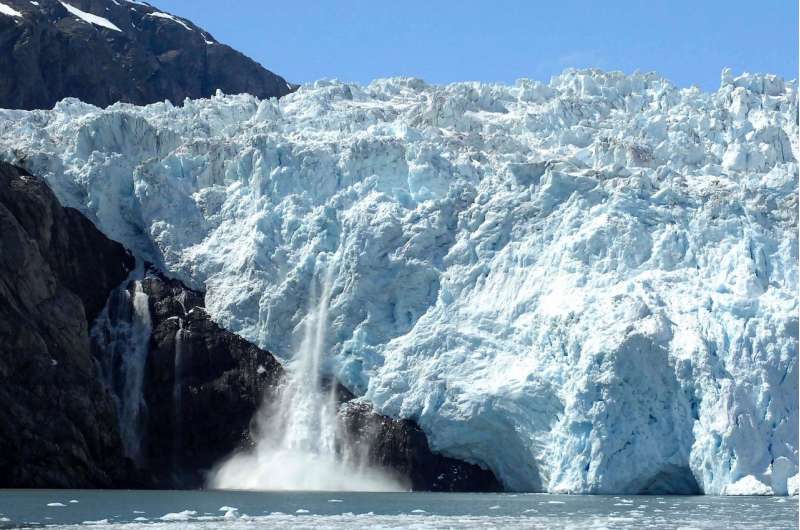Frozen, thawed: How Arendelle's glacier would fare under modern climate change

Gaby Clark
scientific editor

Andrew Zinin
lead editor

As a glaciologist who thinks about ice a lot, rewatching the movie Frozen umpteen times with my six-year-old daughter provides ample opportunity for my imagination to run wild. The movie is set in the fictional kingdom of Arendelle, which is modeled on a fjord landscape, complete with a large glacier at the head of Arenfjord. Ice unsurprisingly plays a very prominent role in the story. Yet this glacier receives very little attention.
Glaciers are receding across the world at an . And on more than one occasion I have wondered how Arendelle's glacier might have fared since the time of Frozen.
To add some scientific rigor to this thought experiment, it is useful to approximate a real geographical location. Arendelle is inspired by the , a region where most of the glaciers flow from the , the largest ice mass in mainland Europe.
We can also approximate the date. Based on , including the clothing and technology on show, it appears the events in Frozen take place one July in the mid-19th century. This means the glacier is depicted towards the end of the Little Ice Age, a cool period lasting several centuries during which most Northern Hemisphere glaciers expanded to their largest size in recent history.
In the movie, the glacier plunges from a high elevation plateau into the fjord below and looks steep and crevassed at the front. This implies a healthy, advancing glacier, in a similar condition to the many outlet glaciers of Jostedalsbreen that reached their around this time.
The short-term health of Arendelle's glacier may have been further boosted by the unseasonal summer snowfall and cold temperatures that Elsa's powers unleashed on the kingdom.
Real glaciers are shrinking fast
The fate of the fictional glacier since the Little Ice Age would have been less positive, as demonstrated by the very real glaciers of Jostedalsbreen. This period has been characterized by accelerated climate warming, causing widespread glacier retreat and thinning.
Since Elsa's time, the real glaciers it's based on have shrunk by about a fifth. Individual glaciers have retreated several kilometers at rates of up to 20 meters per year. This makes it likely that, without any further help from Elsa, Arendelle's glacier would have retreated onto land within decades of the time of the film.
In the late 1980s and early 1990s, an increase in winter snowfall in western Norway meant most major glaciers in the region up to a few hundred meters. The Arendelle glacier might therefore have grown again for a time, although probably not enough for the glacier to re-enter the fjord. While there are other explanations, the more imaginative mind might consider the possibility that a descendent of Elsa was responsible for this period of increased snowfall.
Since the early 2000s, those same glaciers have , retreating by up to 70 meters per year. That's largely because higher air temperatures mean in summer. Several of Jostedalsbreen's glaciers have retreated almost back onto the plateau, while others are that have been nourishing them for centuries.
What would Arendelle's glacier look like today?
Retreat of this scale means the fictional glacier today might look something like , now just a small tongue spilling over from the plateau ice behind. Indeed, it is quite possible that in 2025, designated by the UN as the , Arendelle's glacier would no longer have been visible from Arendelle Castle.
So, if Arendelle's glacier were real, it would be a shadow of its 19th-century self—much like its real-life Norwegian equivalents. By 2050, approximately 200 years after the time of Frozen, the glacier would probably have retreated onto the plateau. The ice cap would also have thinned considerably and might even be in the early stages of terminal break up.
However, while this is , it is by no means certain. that concerted action is needed to reduce greenhouse gas emissions to limit warming.
Magic helped Arendelle once. This time, it'll take real-world action to ensure the real glaciers have a fighting chance of still being around by the time Frozen 3 is finally released.
Provided by The Conversation
This article is republished from under a Creative Commons license. Read the .![]()





















